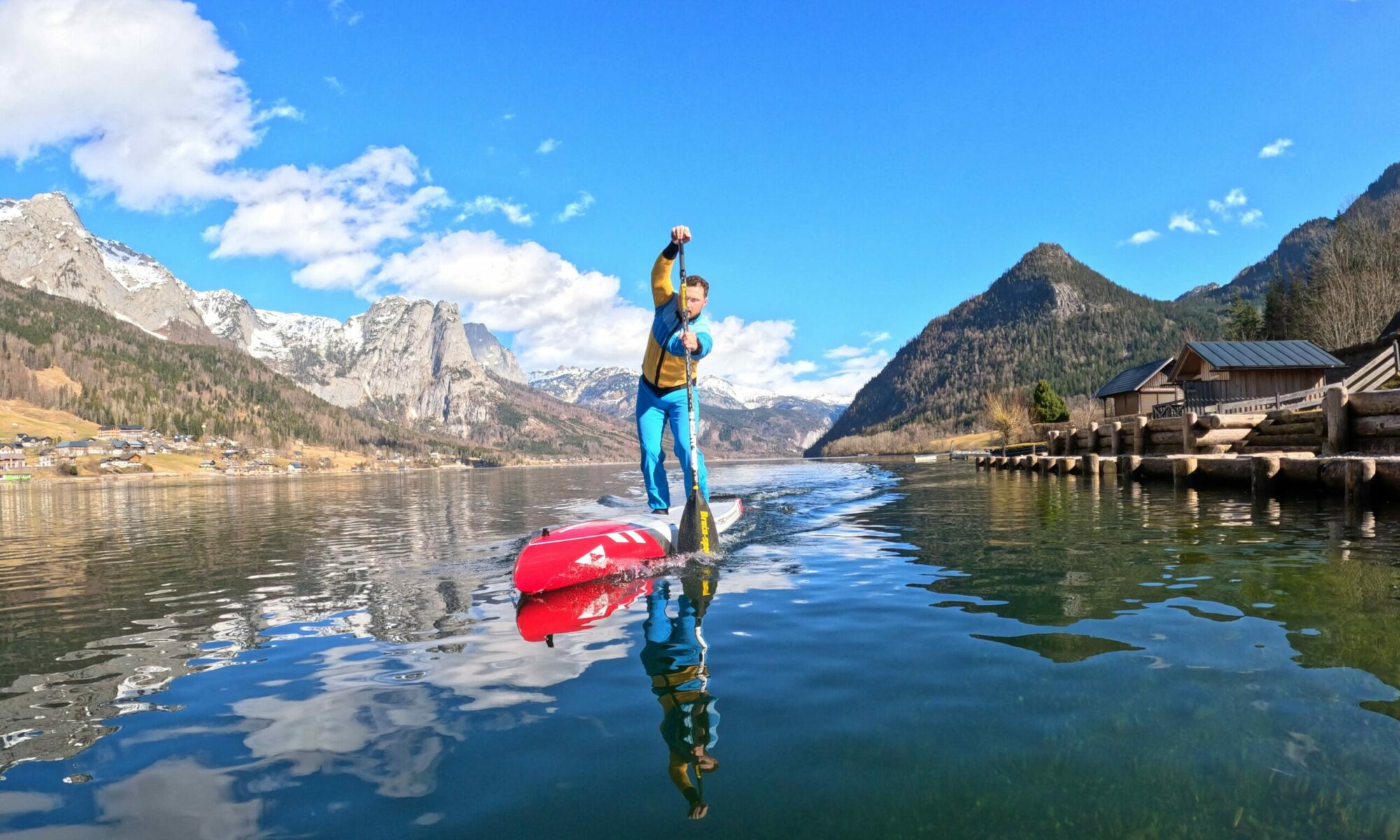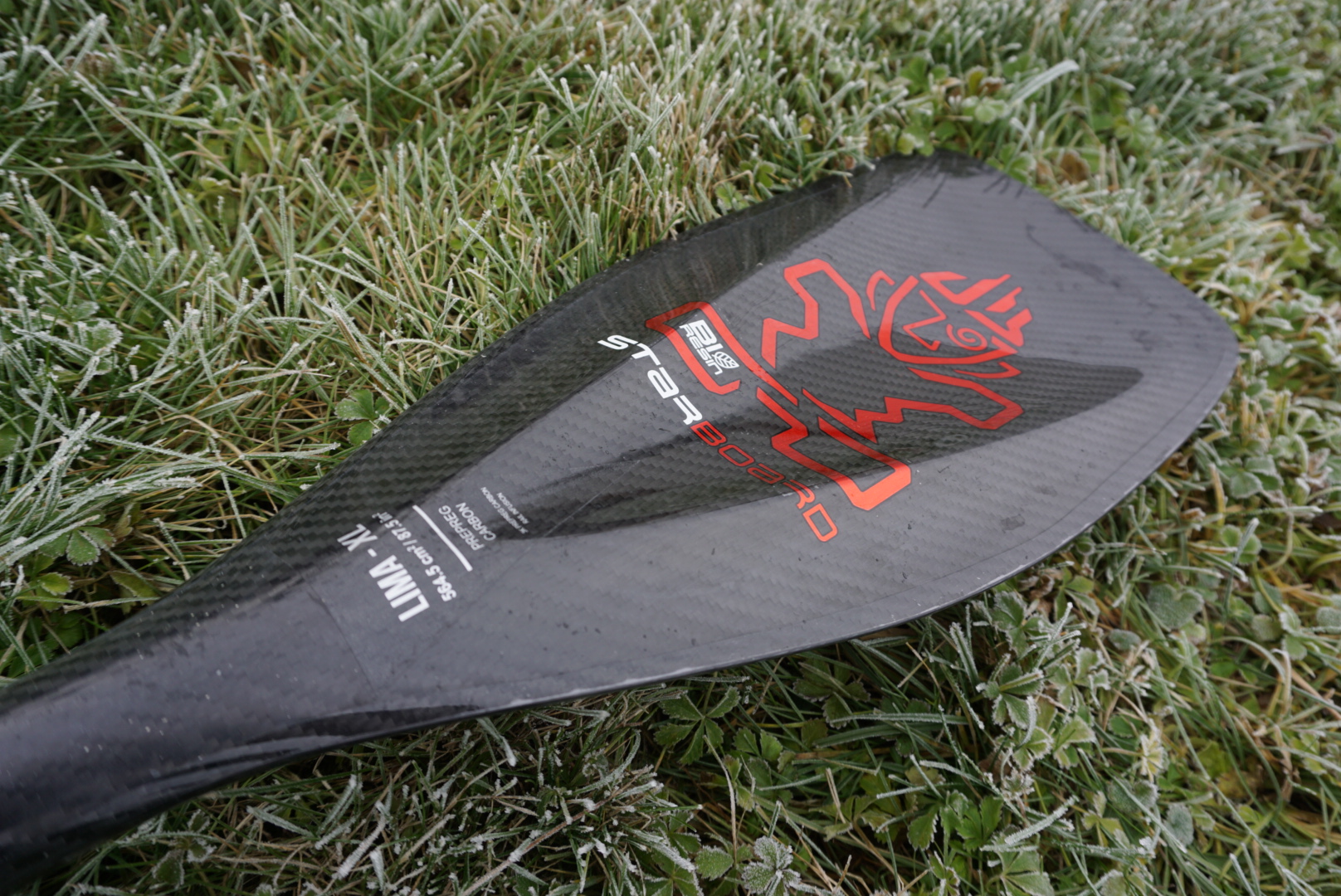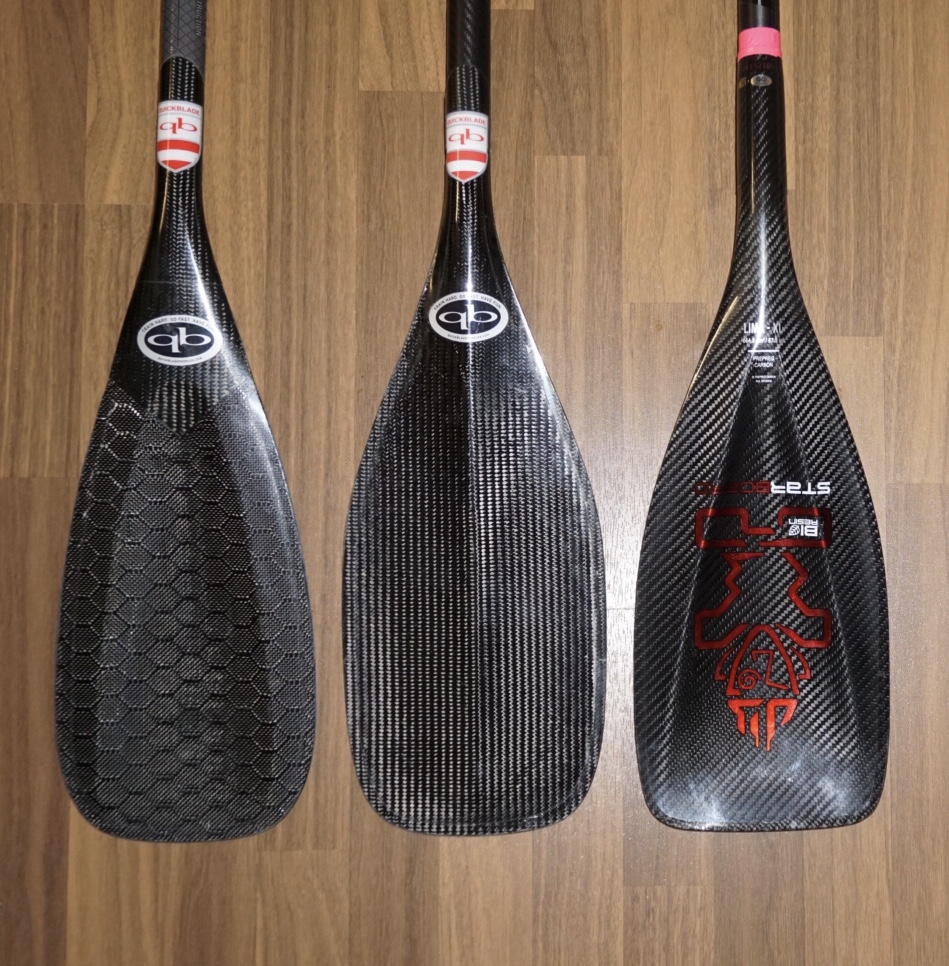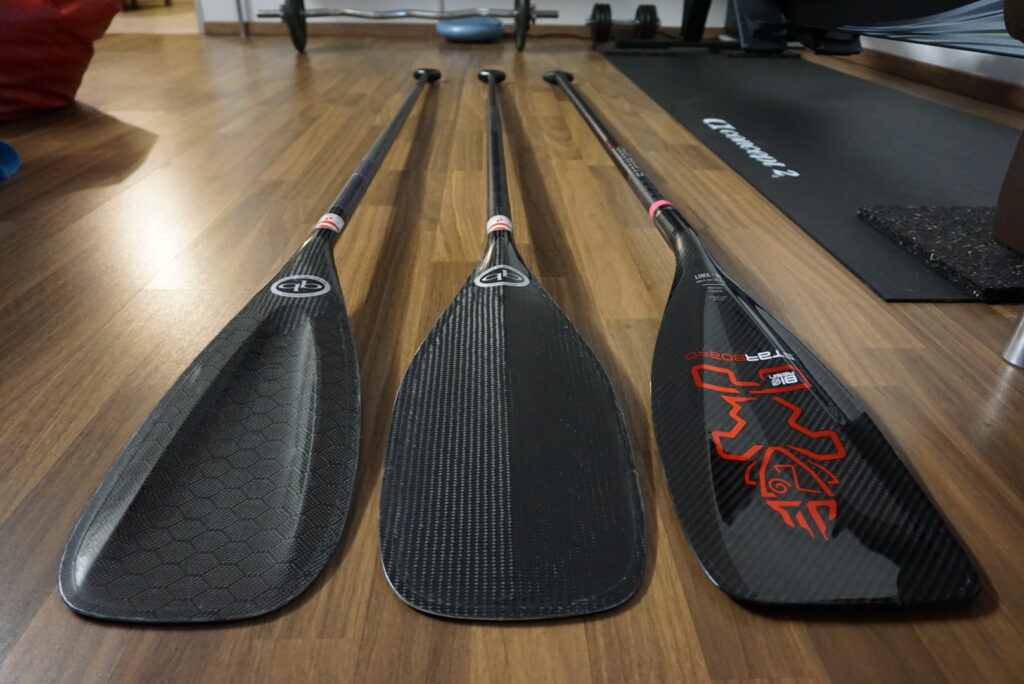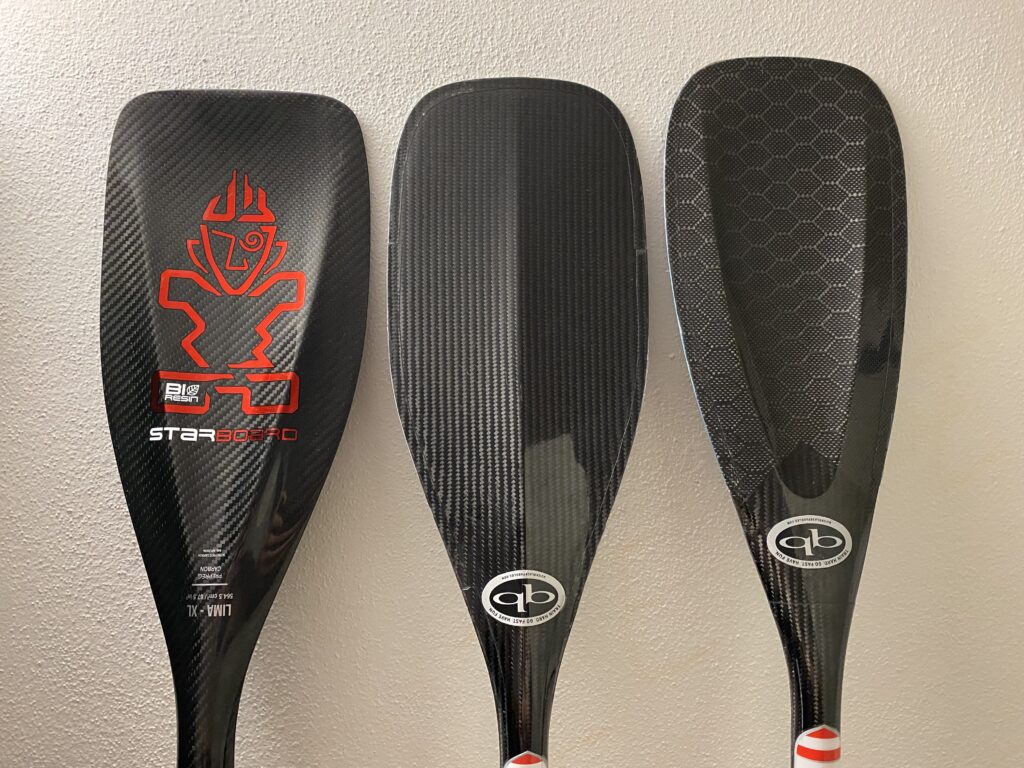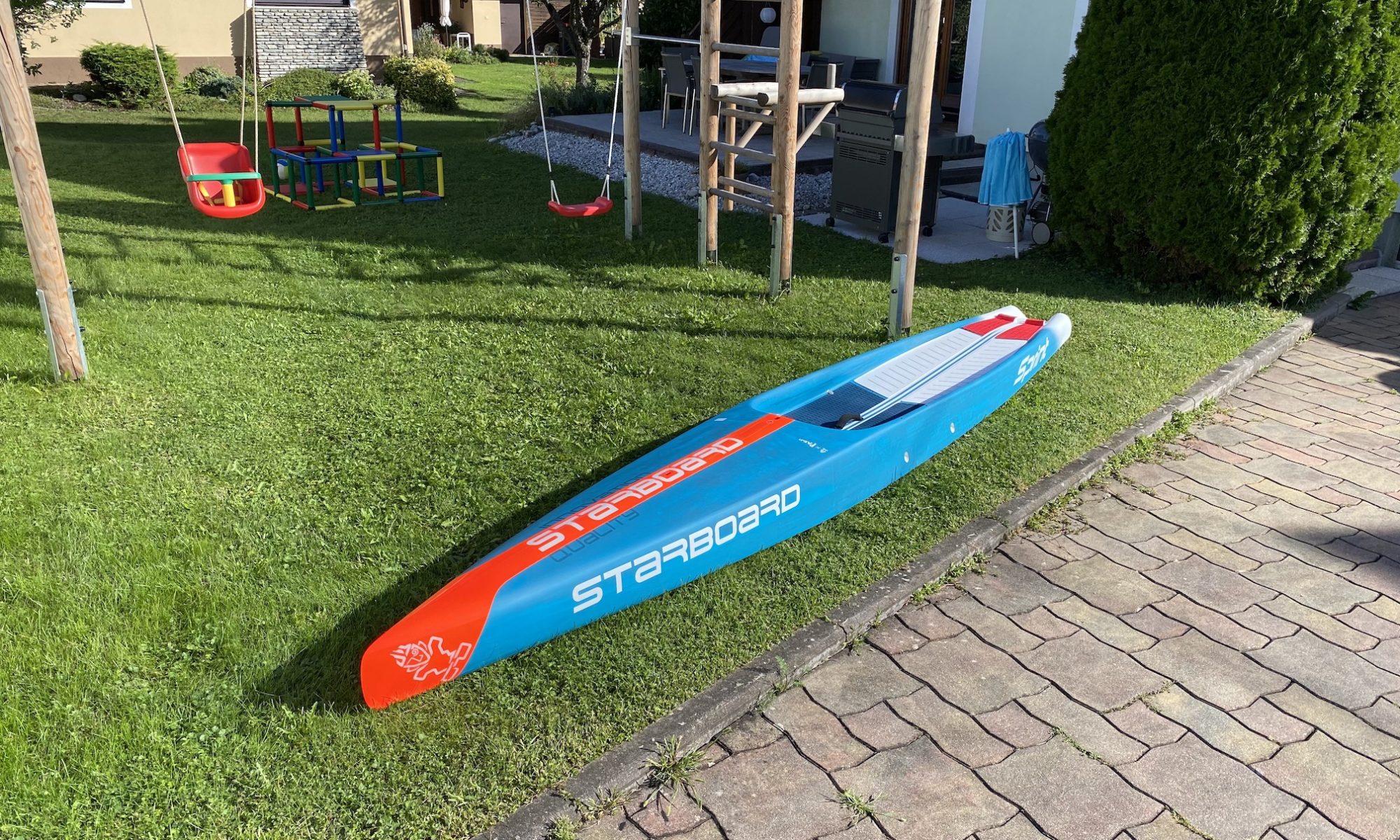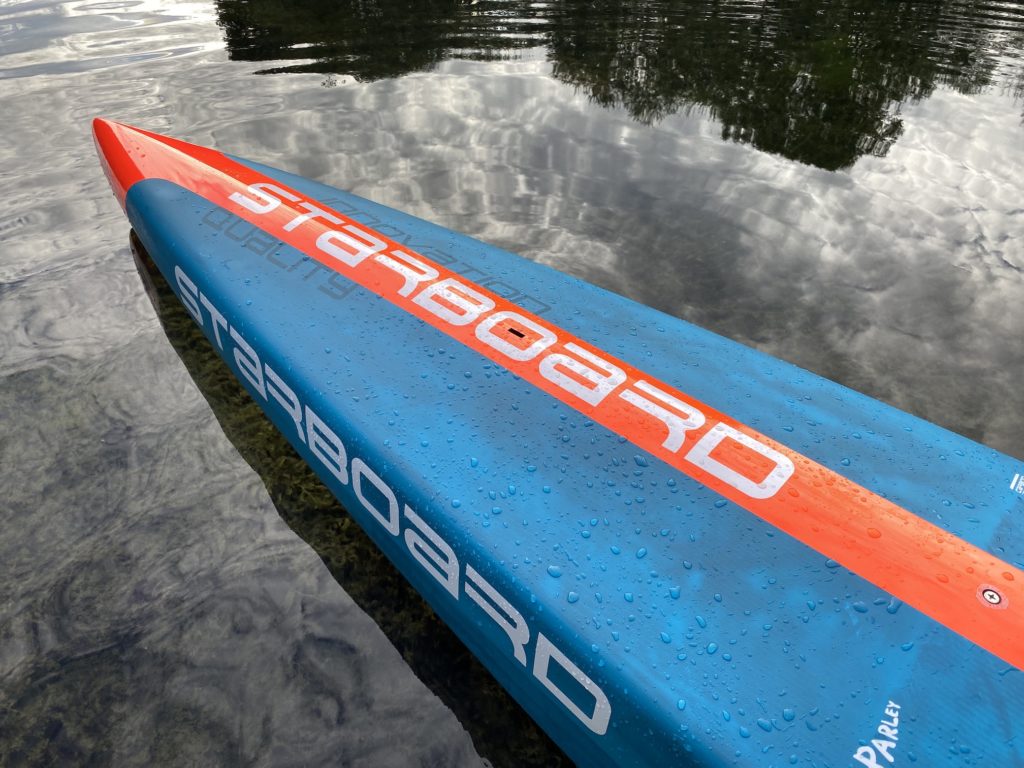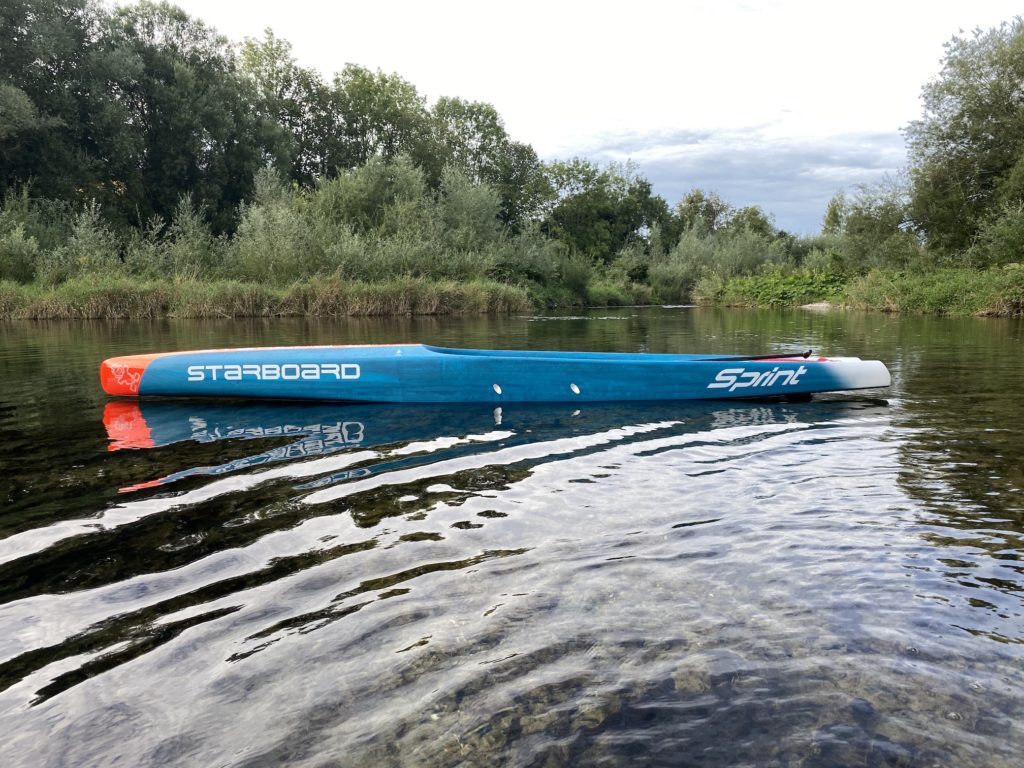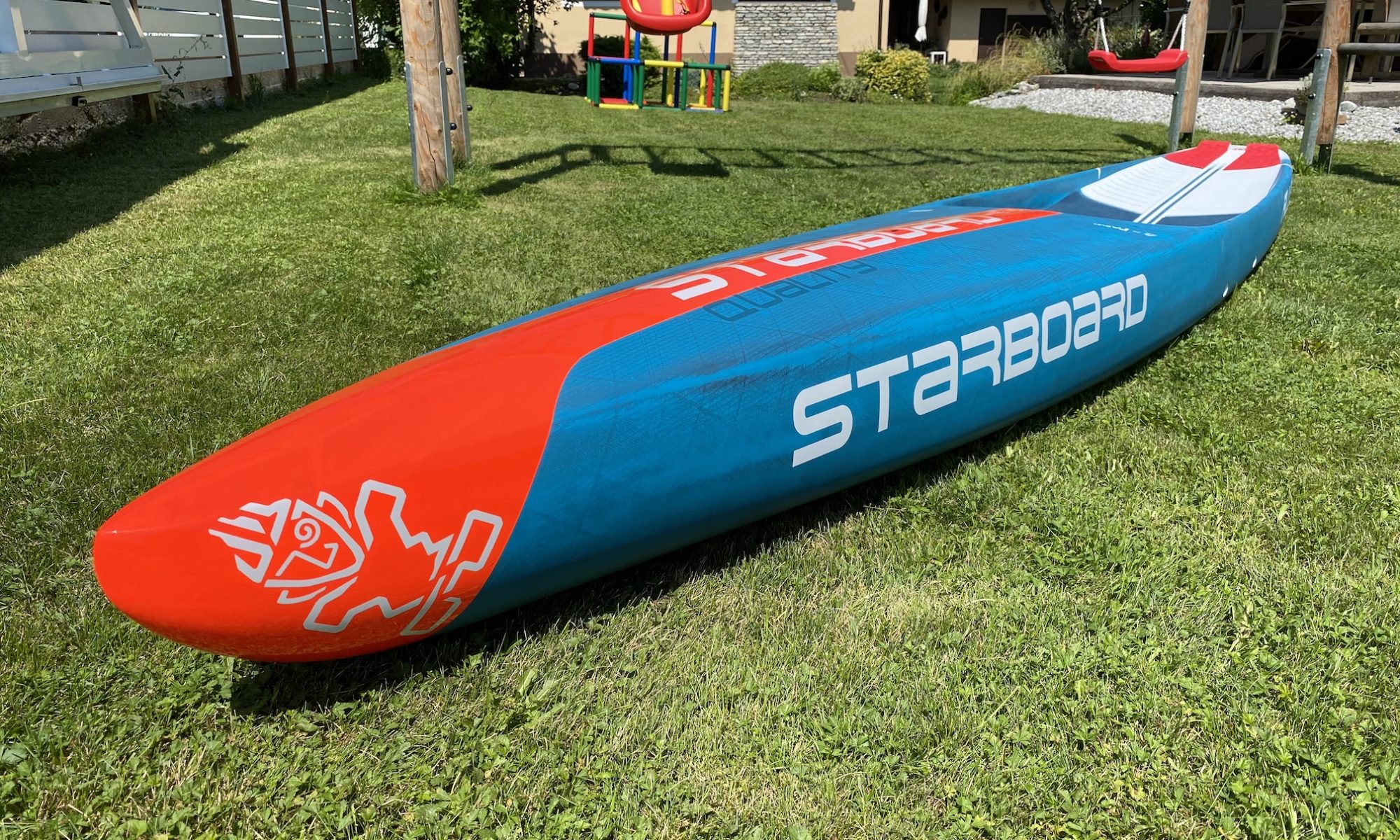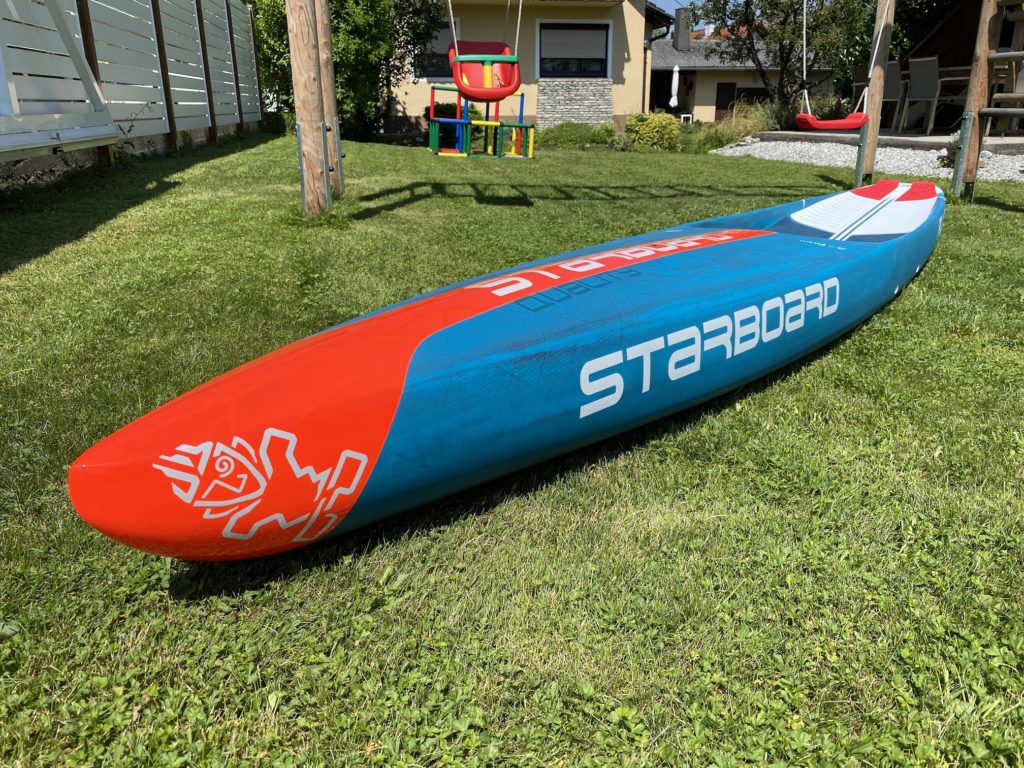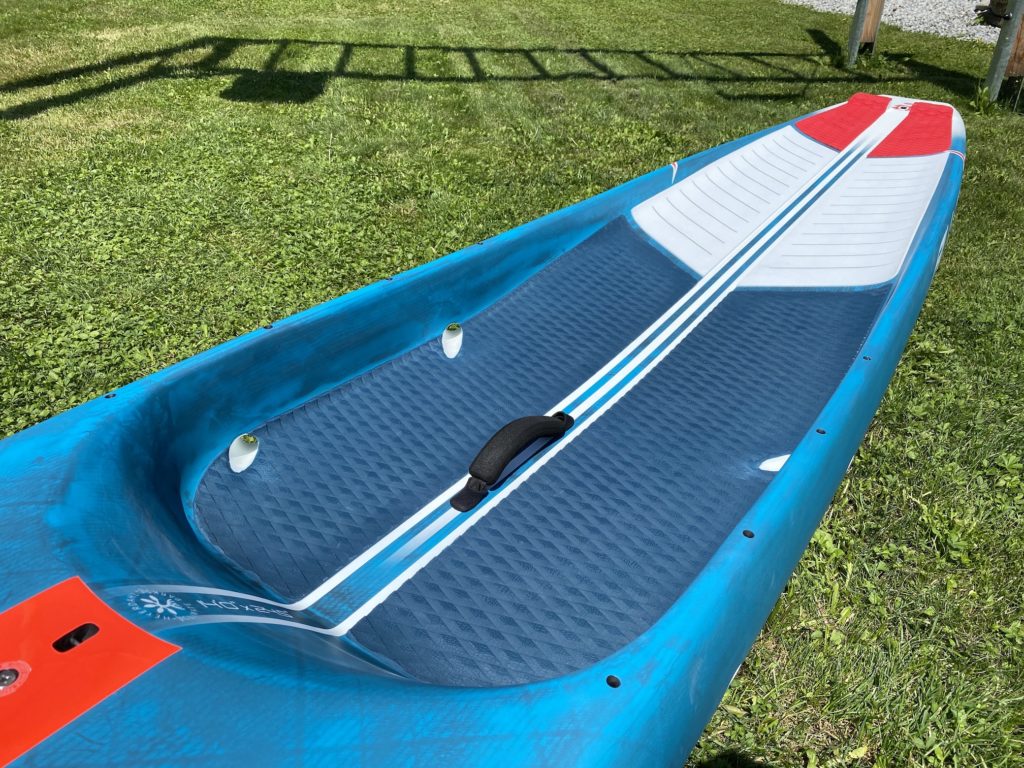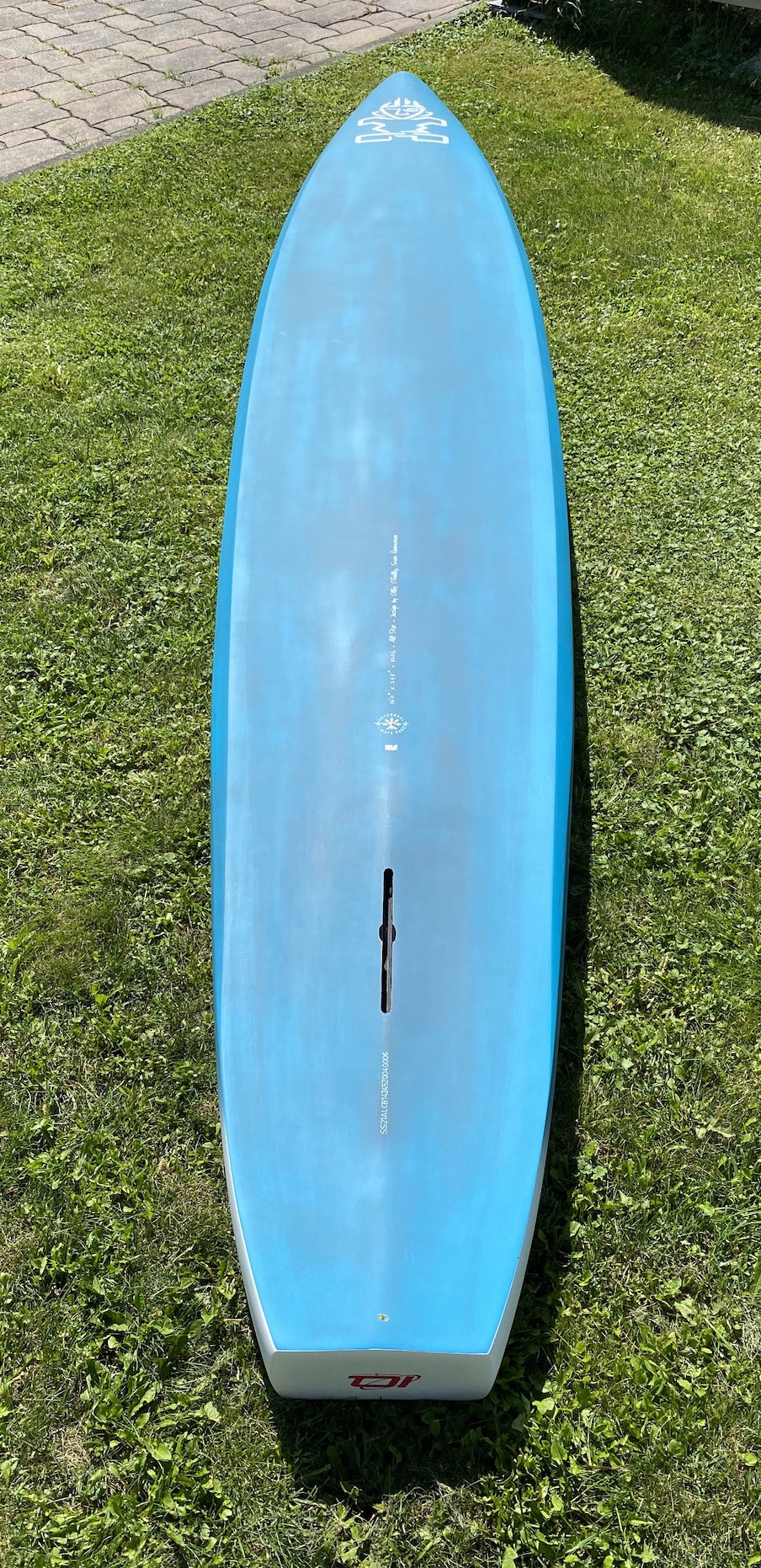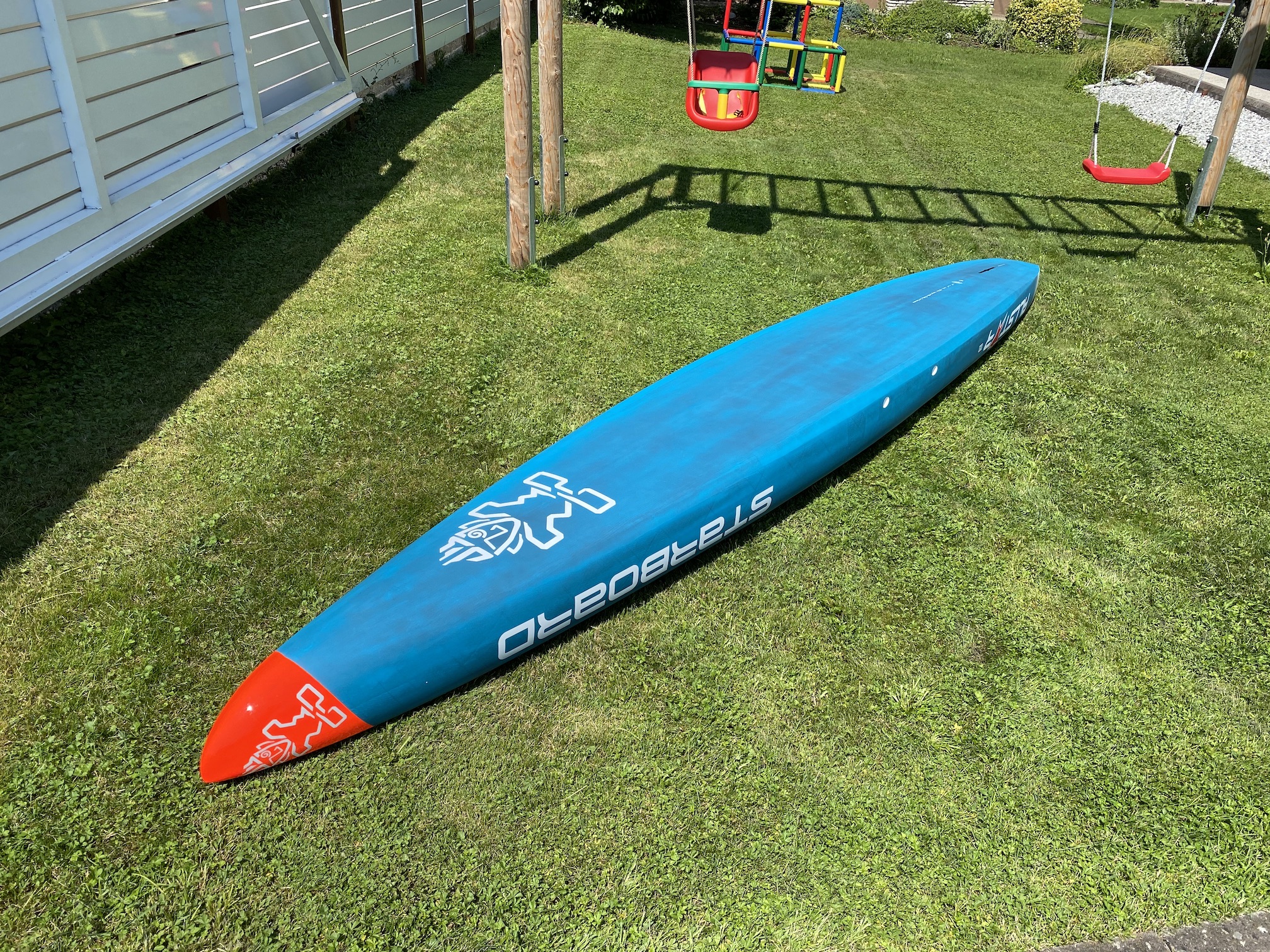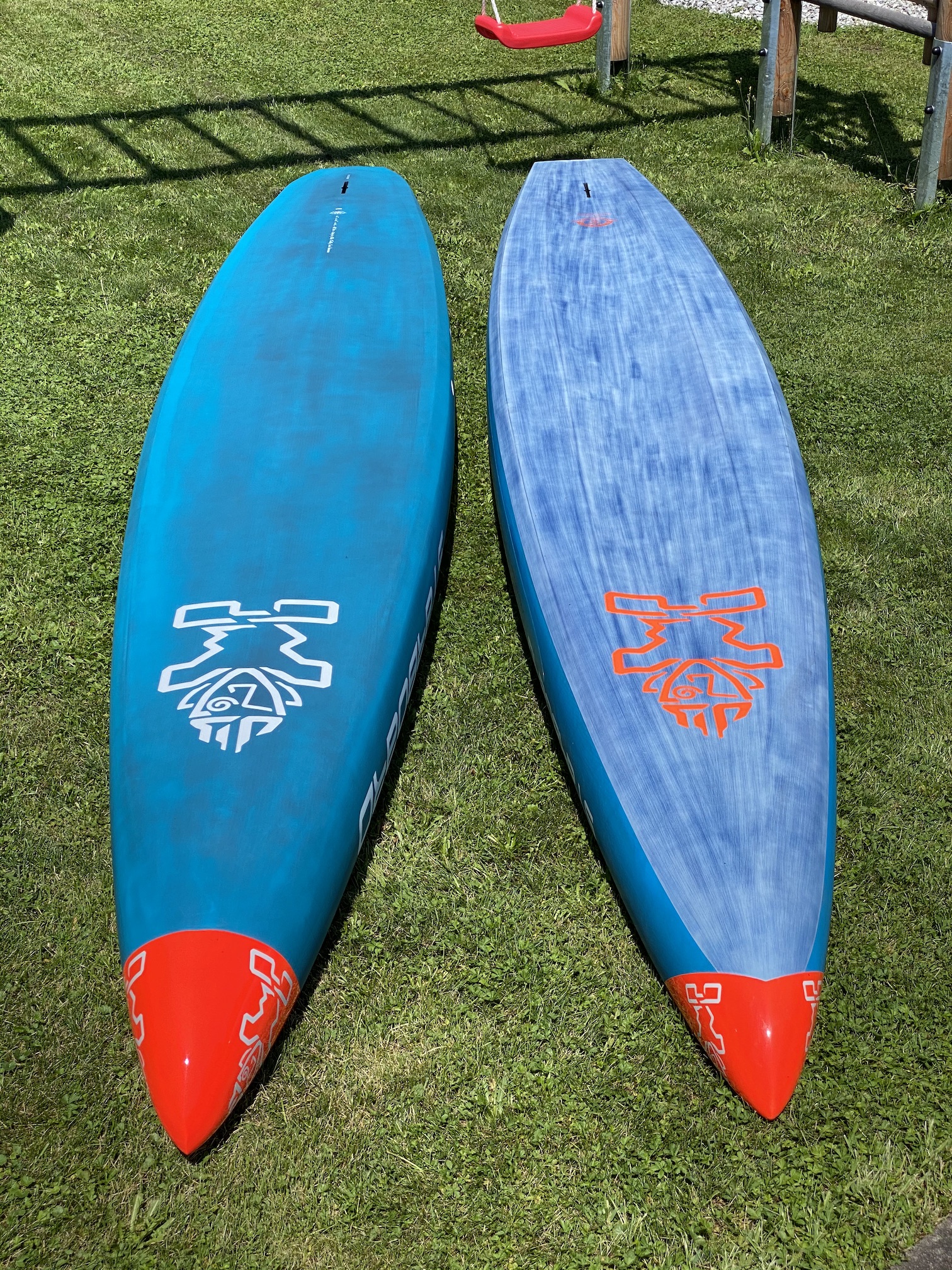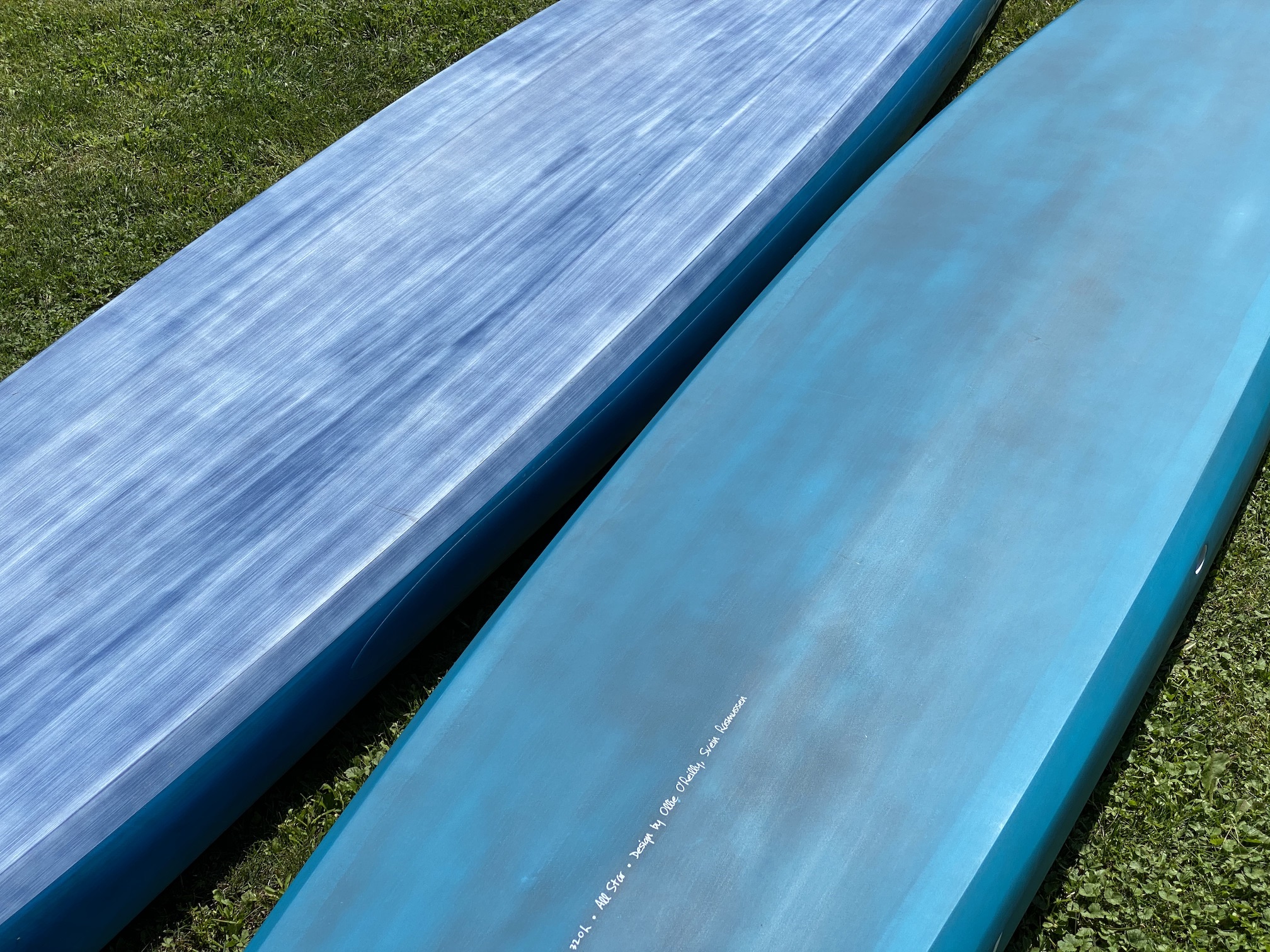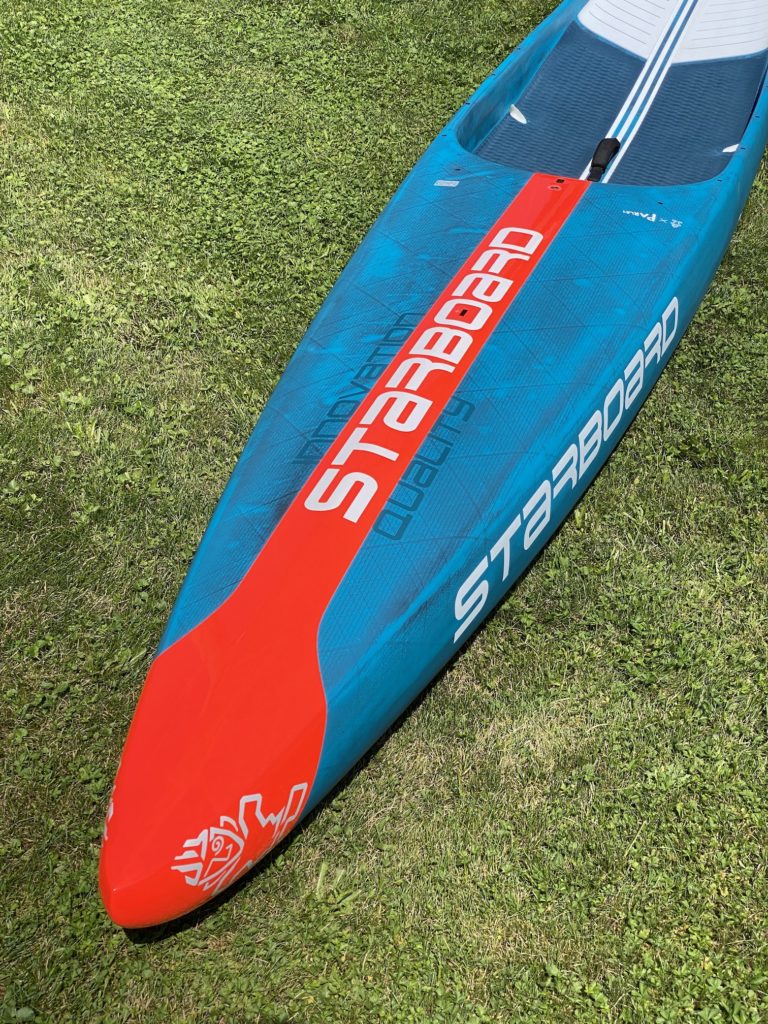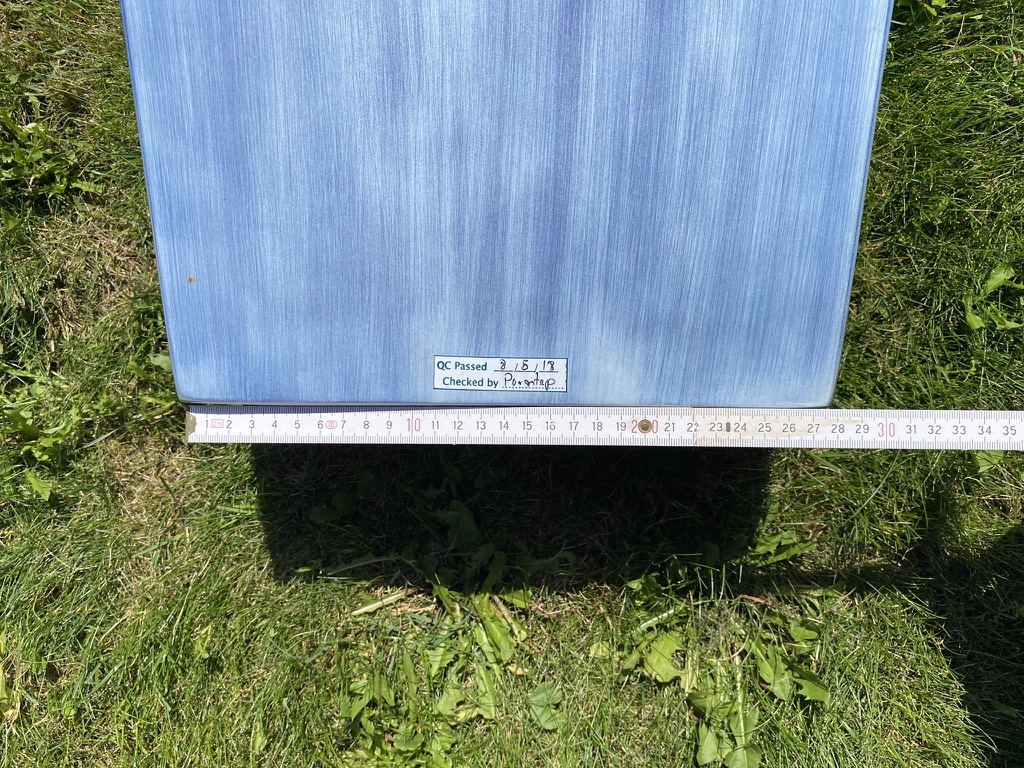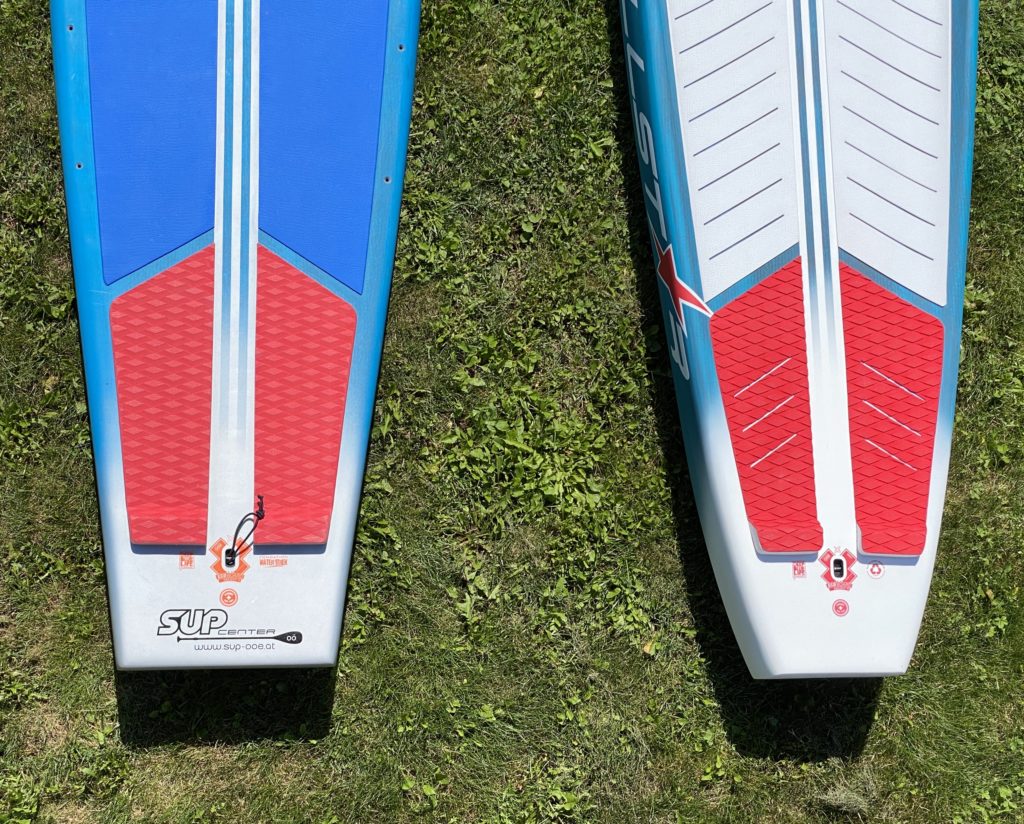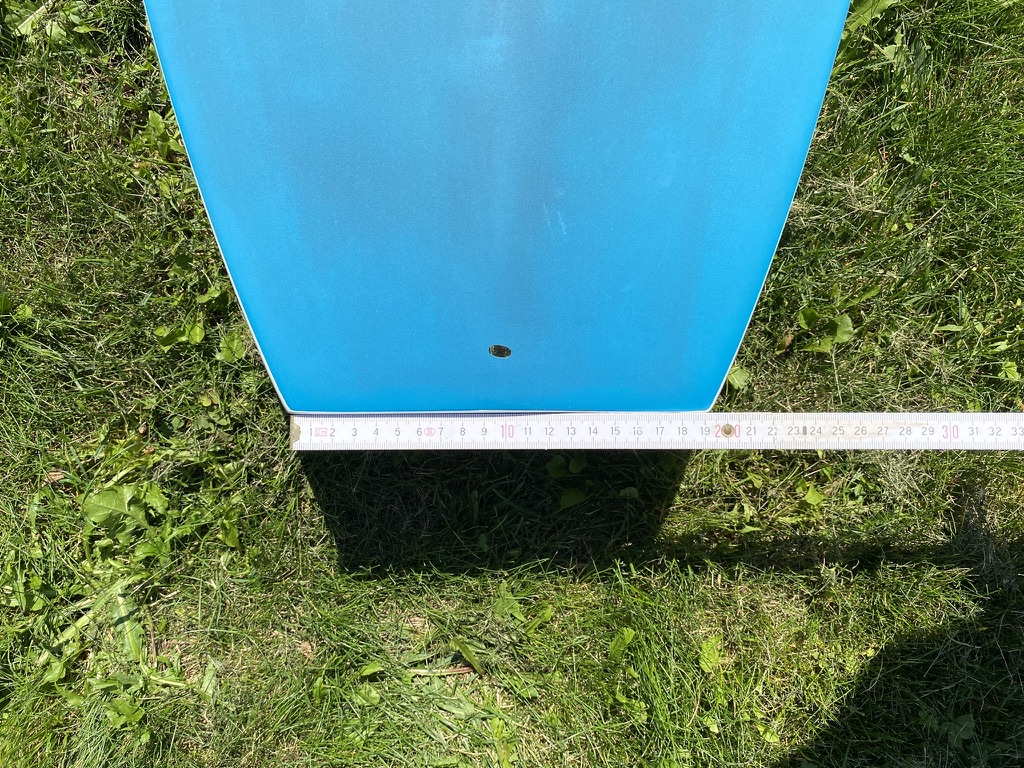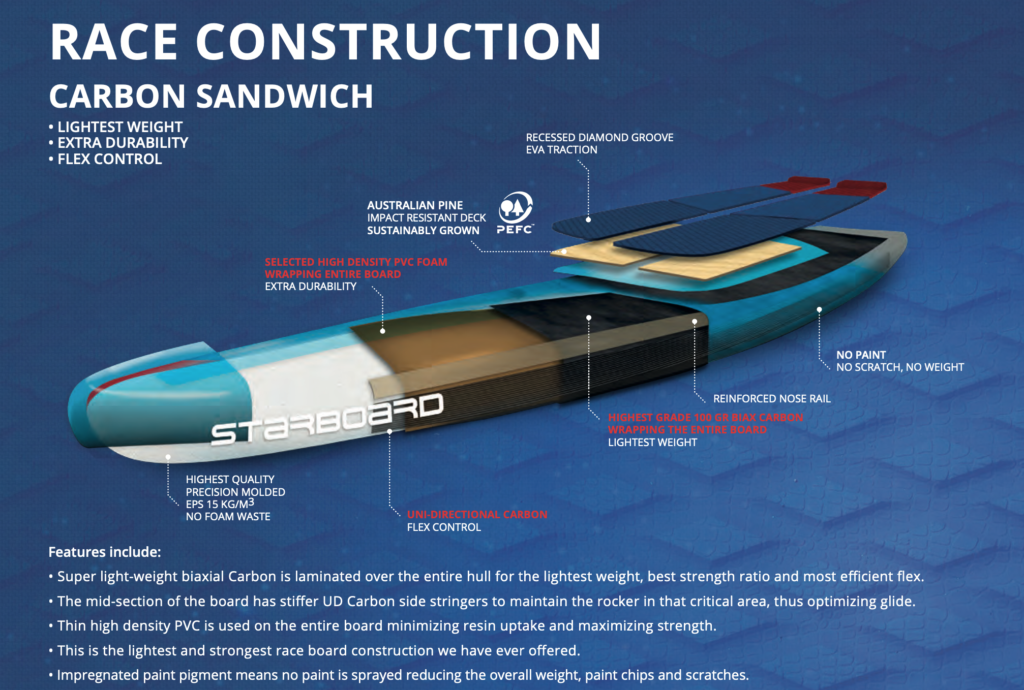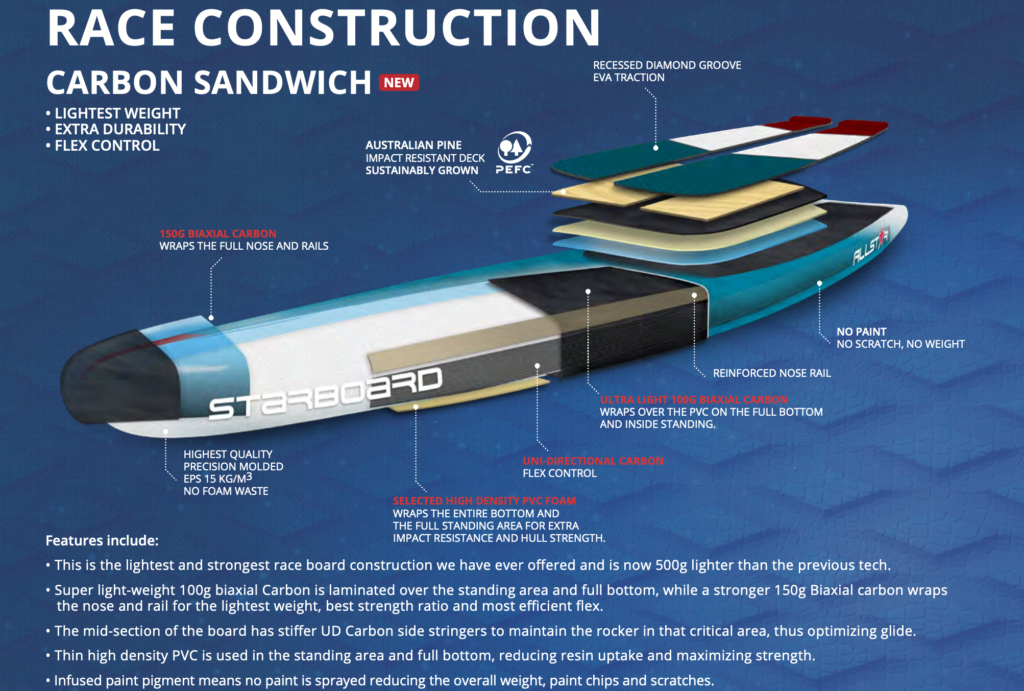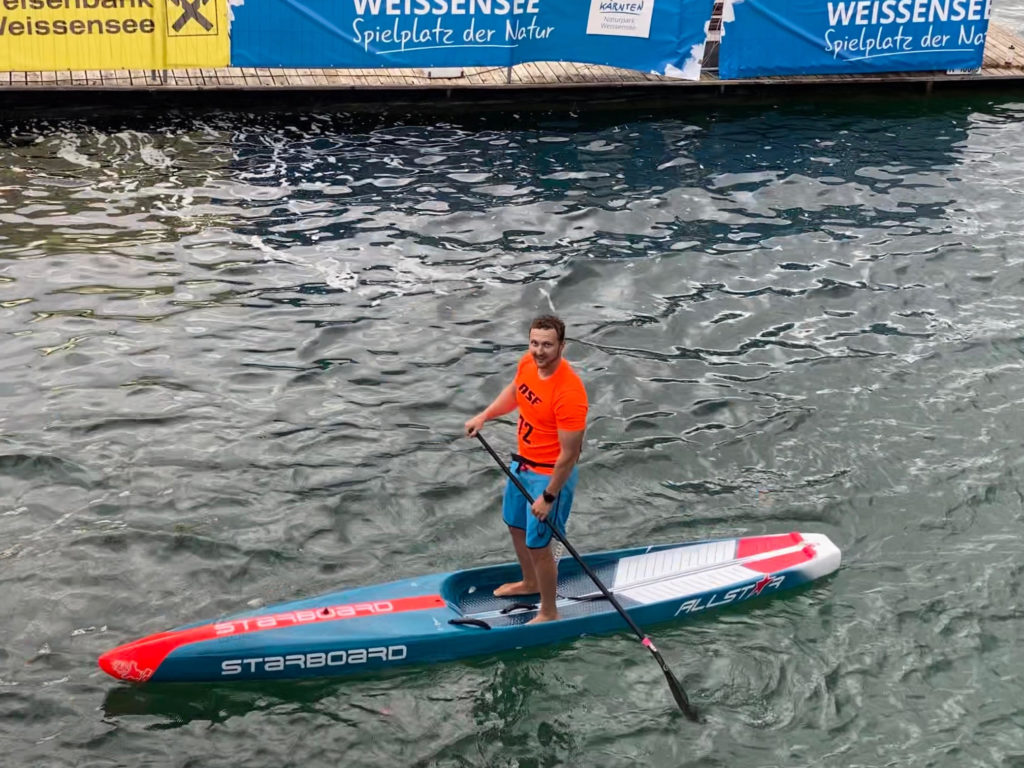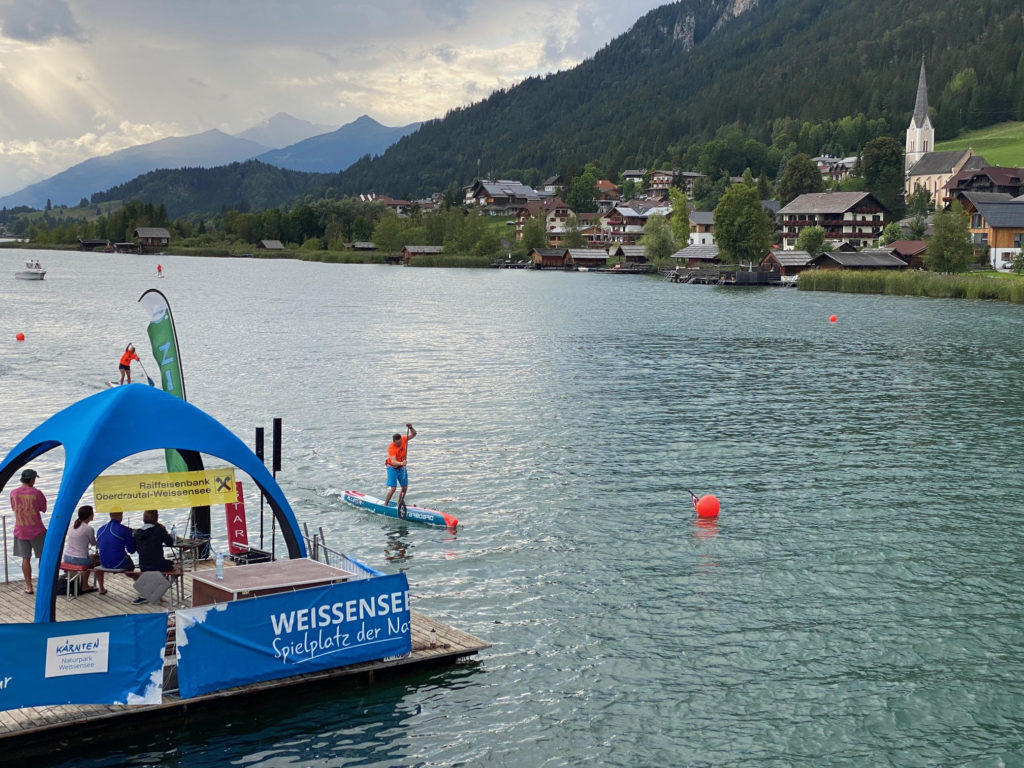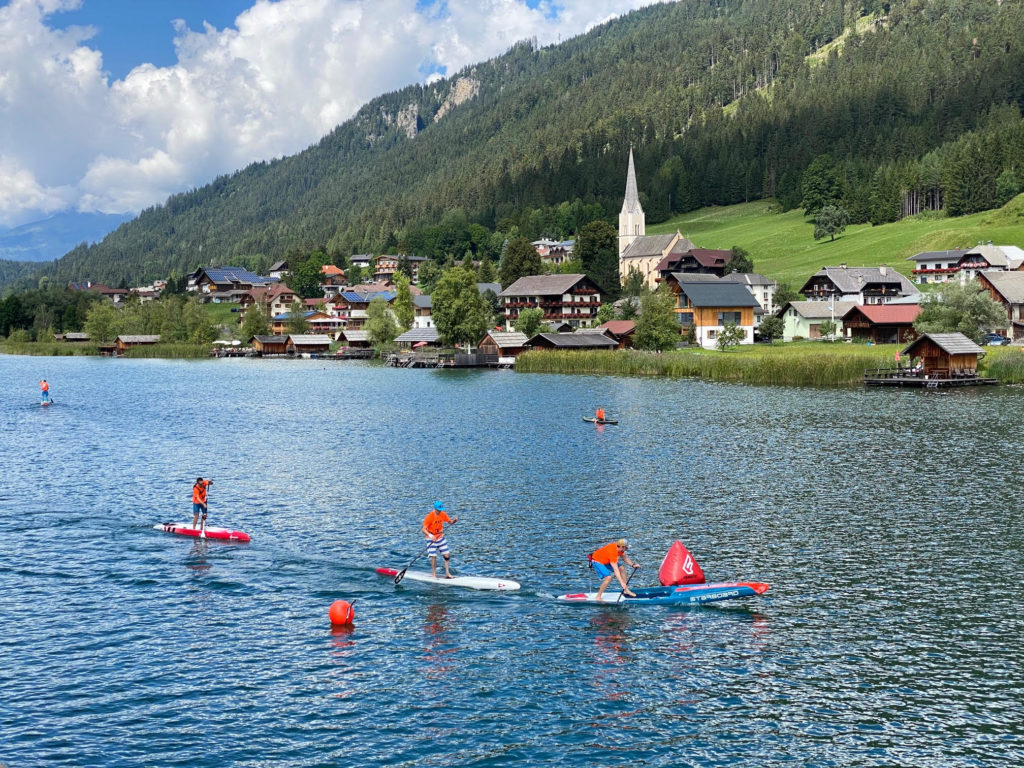Quite some time ago I announced to do the comparison of the Lima 2021 vs Quickblade UV88 & Quickblade Trifecta 96.
First of all I want to let you know that my first impressions got confirmed every time I went back and forth testing those premium race paddles. On the catch the Lima has some rapid pressure build-up and it’s very easy to keep control, no matter what power you put on the blade.
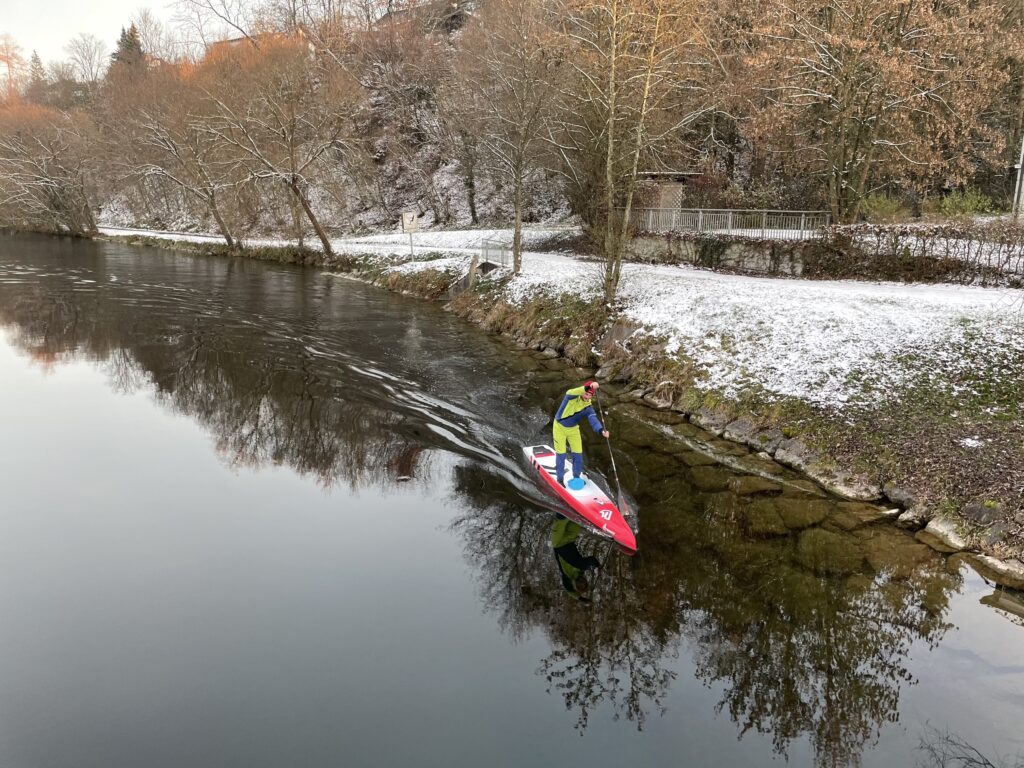
In the past weeks I found myself always getting a grip on the Lima when choosing my paddle, I do get the best distance per stroke and I feel totally connected from catch to exit.
Lightweight Baby …
The weight of the uncut paddle was exactly on par with the numbers you can read on the official starboard website (in this case 411g for 219,5cm) . Cut to 194cm the weight of 385g is incredibly low, while being tough enough to withstand even heavy sprints with full power.
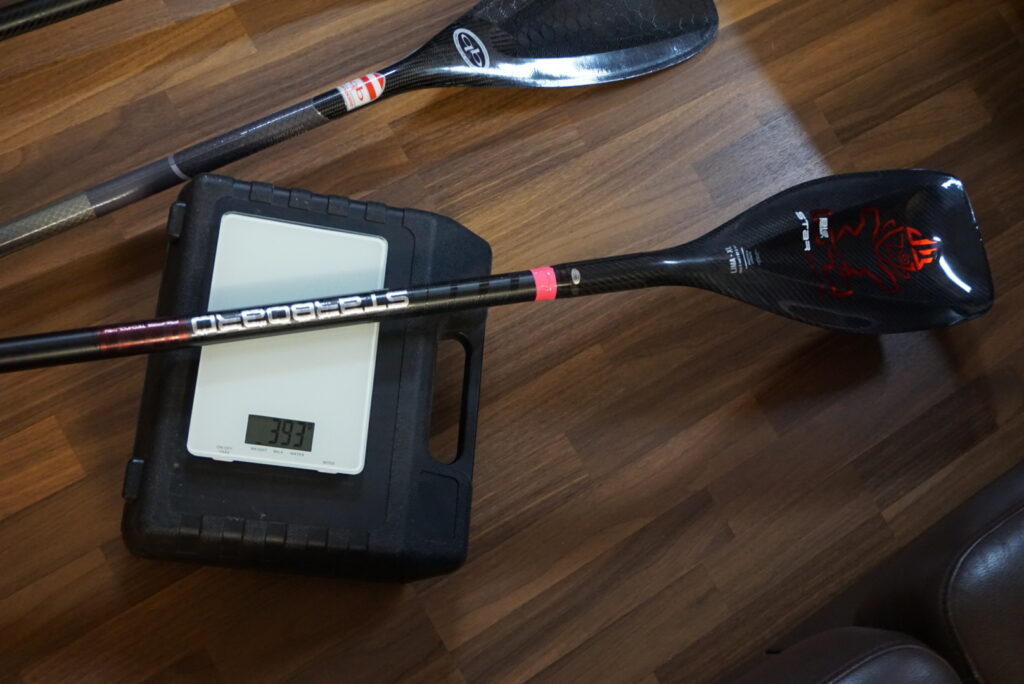
393g with protection film, to cover the edges. 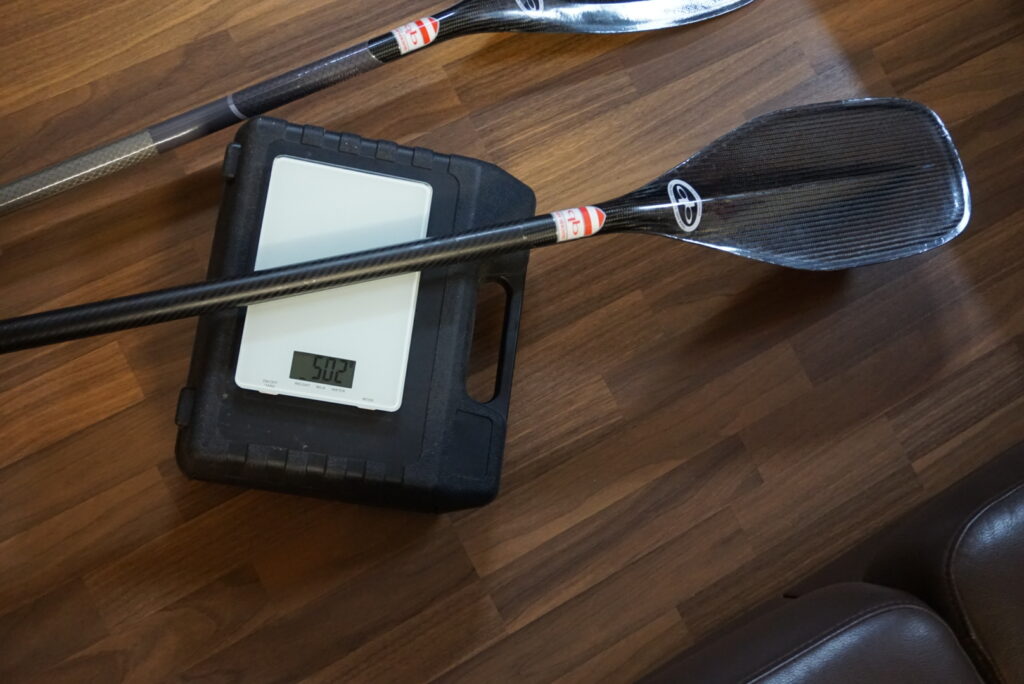
Quickblade Trifecta 96 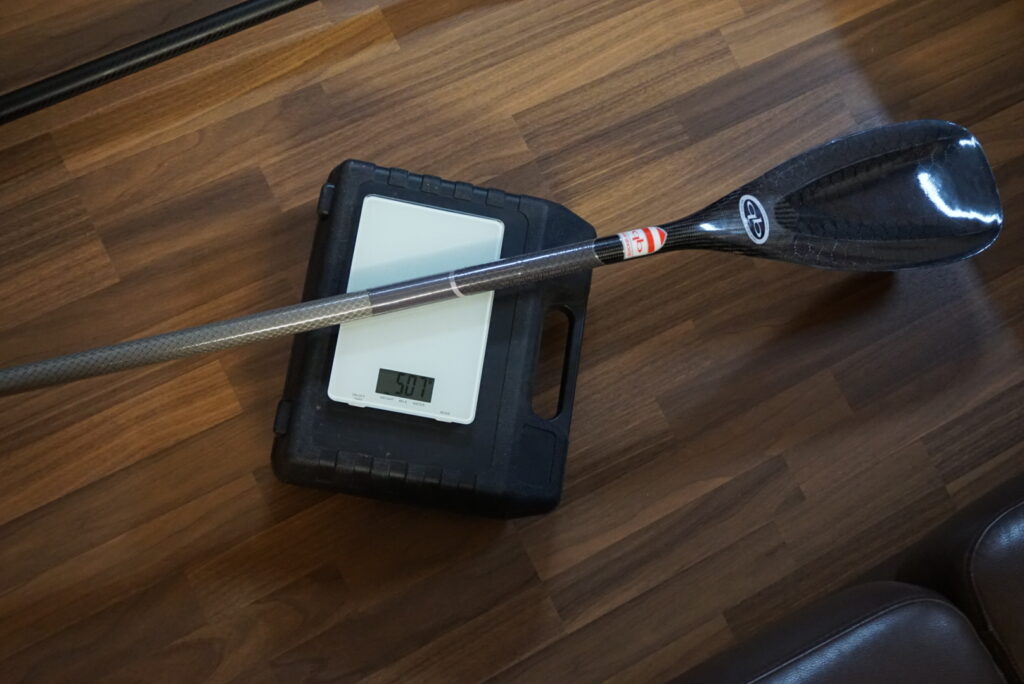
Quickblade UV88
Construction
The construction is impeccable and there are no sharp edges that’ll screw up your board. When having a closer look to the edges of the blade you can see the 3K carbon infusion rail which begs for avoiding ground contact.
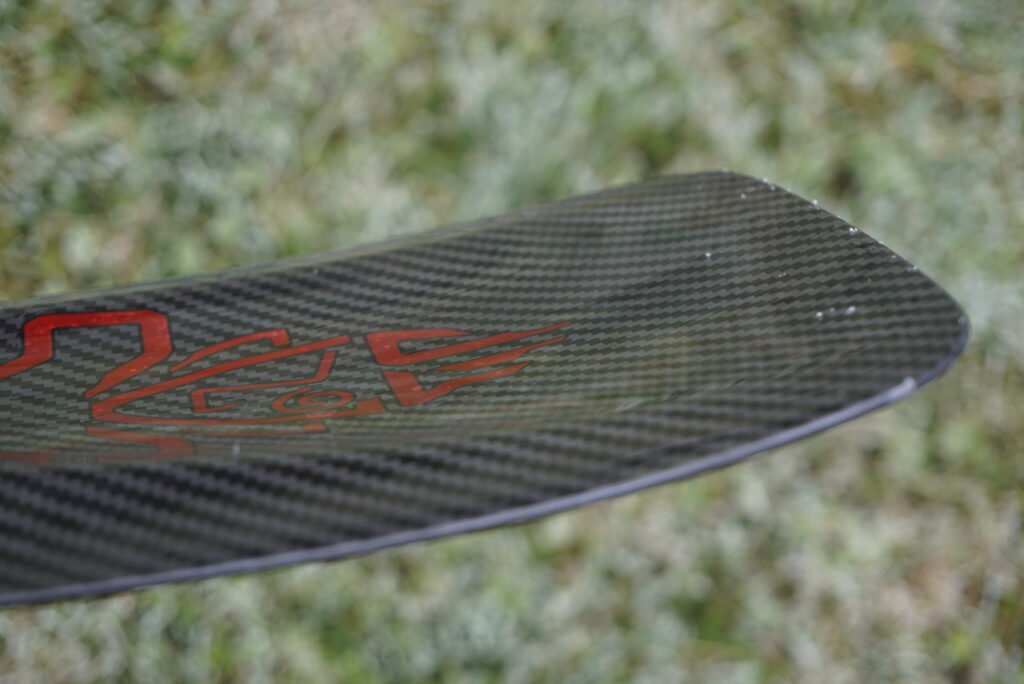
Initially I had to work on the exit phase as the Lima quits pulling to far behind your feet with getting stuck. This is no longer a problem and I’d say the Lima is definitely easier to paddle correctly compared to the Quickblade UV88 , but when comparing it with the Trifecta 96 I do have mixed feelings. The Trifecta 96 has a very smooth pressure build up and lots of power during the power phase, but the aggressive hooked blade tip of the Lima serves for such a connected feel the Trifecta doesn’t provide. Guess what… there is an advantage of the Trifecta Design, due to the forgiving blade shape it’s easy to steer the board and when you missed the sweetspot at the exit it won’t punish you.
Starboard is claiming that you don’t need to worry about paddle alignment and this is totally true, period.
It sounds like I’ve found the perfect paddle for my current paddling style. Yes, it might be my go to paddle but there are two more things to consider …
Stiffness/Flex
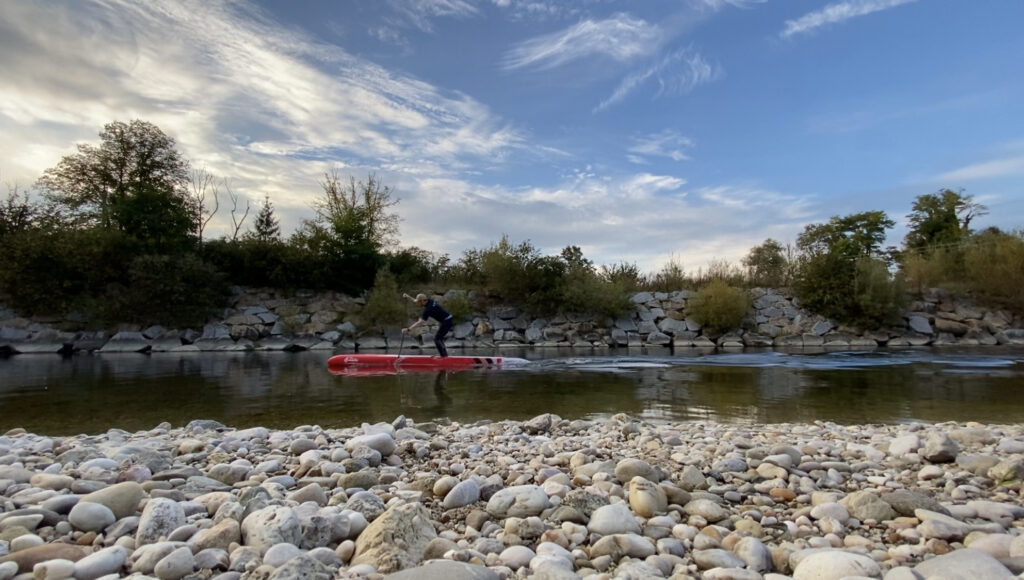
Flex in the shaft is not a bad thing as a paddle feels easier on your joints and shoulders, but besides loosing some power when stored energy is not given back until you’ve finished the power phase it’s also the way a shaft flexes. While the diamond elite shaft of the newest Quickblade paddles feel very stiff, they do have some flex in the upper area next to the grip. Some paddlers do find them too stiff and I could never understand that, until I did lots of sprint training at the end of this summer. If you’re not really carefully with warming up and knowing your limits, you can easily hurt yourself while trying to snap your QB 😀
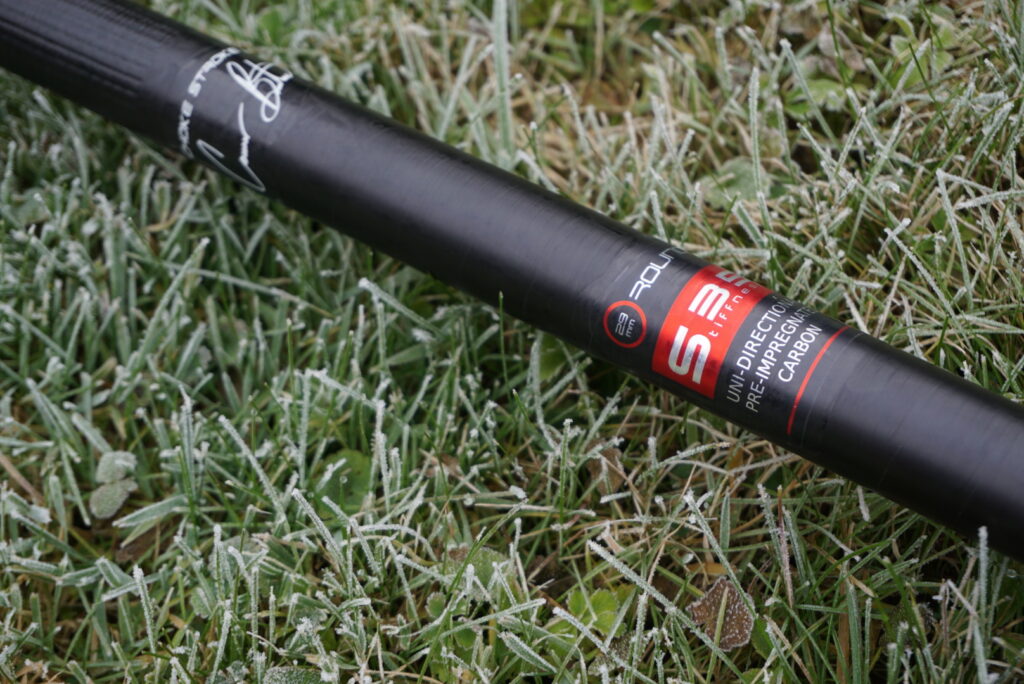
When doing longer sessions with average speeds of 8-8,5km/h I never had a feeling that there is too much flex in the Limas shaft. The opposite was true… after some kilometers upwind, the shaft felt incredibly stiff without putting to much stress on my elbows or my shoulders. I’d say for most paddlers up to 80kg the S35 shaft should be perfectly fine, if you love that firm shafts you could try the S30 shaft or look elsewhere.
To be fair I have to adress that Starboard is offering an even stiffer shaft than the S35, but when sprinting I can feel that there is still some energy stored in the shaft when releasing the blade.
So far so good, but wait a minute … I said that there are two things to consider!
“New Super Handle …”
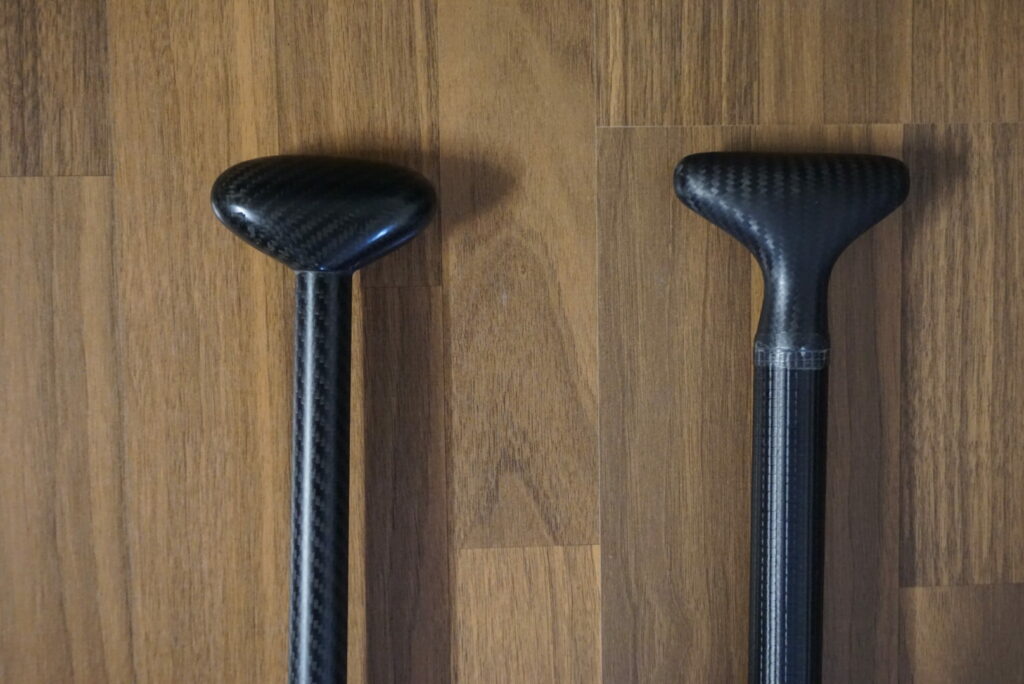
While I totally love the hand flattering and perfectly sized QB handle, I really can’t understand why Starboard is offering a stunning 9 (!!!) shaft options, while only offering one type of handle. The so called New Super handle is a handle which takes time getting used to. I do feel comfortable with it, but the QB Handle fits better when you’re not gripping parallel to your knuckles. While some paddlers found this handle quite okay, I doubt that Starboard will gain a large fanbase of it.


Final Verdict
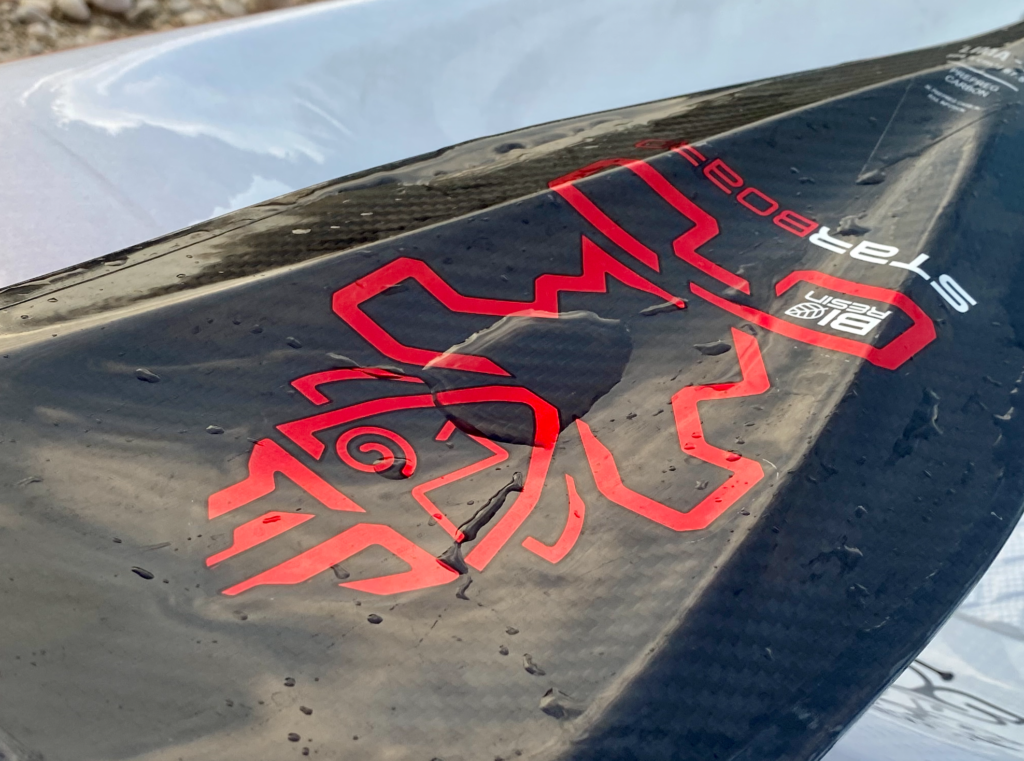
Naming a 87,5sq inch blade a XL paddle feels strange, but the deep concave serves for excellent grip and direct feel some >95sq inch paddles can’t provide. If you’re searching for an extremely lightweight paddle with lots of shaft options, you’ll definitely want to have a look at this great paddle.
Once used to this paddle, it is difficult to feel comfortable with other paddles.
Paddlers below 90kg who prefer higher cadence and aren’t as fast or strong as the Hasulyos, Boothy & Co shouldn’t be shy to keep an eye on the smaller blade options Starboard provides.
Here are my subjective impressions expressed in numbers:
| Starboard Lima S35 XL | QB UV88 | QB Trifecta 96 | Croslake Marin 2 | Jantex Ypsilon soft shaft 87″ 2 piece | |
| Ease of Catch | 9 | 7 | 9 | 8 | 8 |
| Grip at Catch | 9 | 8 | 7 | 7 | 7 |
| Grip Power Phase | 9 | 8 | 8 | 8 | 7 |
| Exit | 5 | 7 | 8 | 8 | 8 |
| Stiffness | 6 | 8 | 9 | 10 | 8 |
| Haptic | 7 | 9 | 8 | 7 | 9 |
| Weight | 9 | 7 | 7 | 6 | 7 |
| Handle | 5 | 10 | 10 | 7 | 5 |
| Quality | 8 | 8 | 8 | 7 | 9 |
| Price | 3 | 2 | 2 | 7 | 4 |
